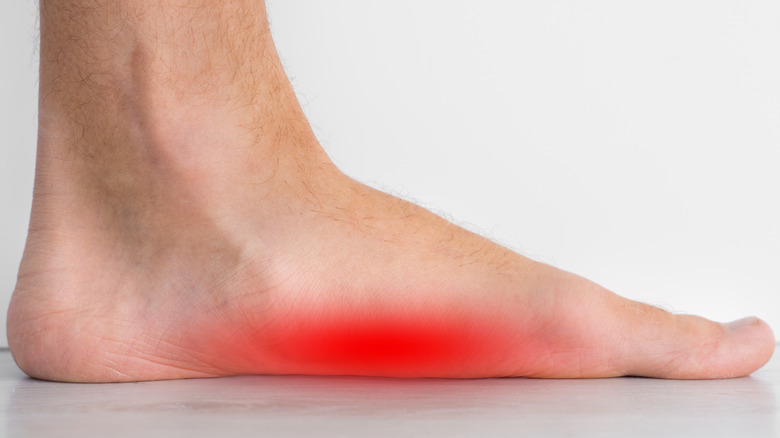Why Do Flat Feet Cause So Much Pain?
While roughly 20% of people in the U.S. reportedly have high arches, 25% of the population has the opposite problem (via Orthopedic Associates). These 60 million people have a condition known as pes planus, or flat feet, in which the center of their foot touches the ground where there would normally be an arch, as per the Advanced Foot & Ankle Care Centers (AFACC).
While we are all initially born with flat feet, our arches usually develop by the time we turn six (via Cleveland Clinic). Whether the condition stems into adulthood or emerges later in life, the two most common forms of flat feet are known as flexible or rigid. Cases of flexible pes planus are those in which arches are present while sitting, but go away once the person stands up. In cases of rigid pes planus, no arches are present at all, regardless of whether the person is sitting or standing.
Flat feet are generally not cause for concern. However, for some people, the condition can cause pain and discomfort in other areas of the body such as the legs, knees, or hips (via Cleveland Clinic). Those affected may also be more susceptible to certain health conditions, including arthritis, bunions, or shin splints. How is it that the absence of arches can cause pain that radiates far beyond the feet?
Risk factors and treatment for flat feet
High blood pressure, diabetes, broken bones, pregnancy, or a damaged Achilles tendon are a few of the different health conditions that can increase one's chances of developing flat feet (via Cleveland Clinic). Those with the condition often experience pain. This is due to the increased amounts of stress placed on the surrounding muscles and ligaments, as per MedicalNewsToday. This stress can also radiate to the hips and knees, particularly if the ankles point inwards.
In the event that flat feet begin to impact your ability to walk, Healthline suggests consulting with a podiatrist. In addition to a physical exam, your doctor will likely conduct a foot X-ray to get a better look at your foot's bone structure.
Treatment options can vary from lifestyle changes to medical interventions, such as surgery or prescription medications (via Healthline). However, the latter options are often implemented for more severe cases of flat feet. Instead, your doctor may suggest the use of supportive shoe inserts known as orthotics. They may also suggest rest, diet changes, exercise, or certain stretches to help relieve physical stress placed on the feet.


